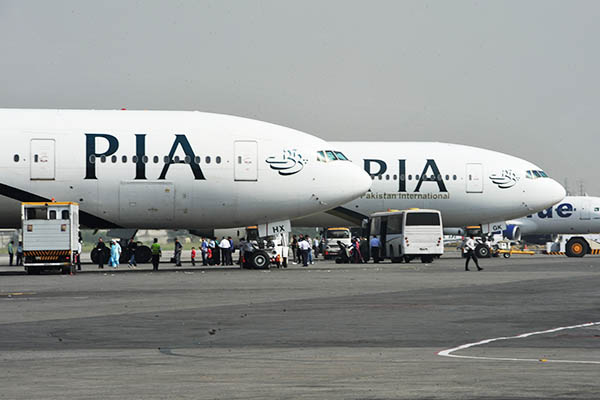
Farooq Naeem—AFP
The Pakistan International Airlines (PIA) has cancelled or delayed over 400 flights—both international and domestic routes—in the past 10 days following a “halt of fuel supply by Pakistan State Oil (PSO)” due to non-payment of dues. The cancellations and flight delays have inconvenienced hundreds of passengers, with a PIA spokesman maintaining efforts are underway to allocate them on alternate flights. The news comes as the government ramps up efforts to privatize the loss-making state-owned entity (SOE), with the Finance Ministry making clear it is unwilling to allocate any additional funding to bail out the airline amidst an ongoing economic crunch.
The privatization of PIA has been a long time coming, with a study conducted in 2017 offering a path forward. Rather than acting on its advice however, successive governments have dithered for fear of public backlash, compounding its impact on the national exchequer. Unfortunately, the massive liabilities of the national flag carrier—overall losses have soared to Rs. 713 billion, with an annual deficit of Rs. 153 billion—make it a troubling investment and would hamper its privatization. According to the government, it plans to sell off the core business of PIA, while retaining much of its assets, further reducing investor interest. The current push is believed to be motivated by demands from the International Monetary Fund (IMF) to restructure all loss-making SOEs as part of an ongoing drive to attain sustainability.
The real tragedy is that PIA’s collapse was apparent to all, even as authorities kept insisting they could turn it around. Peaking in the 1980s, thanks in large part to a monopoly, PIA has failed to address modern demands. Multiple governments utilizing it as a catch-all for promises of employment has similarly played a major role in its inability to turn a profit; last year, the airline claimed it had an aircraft-to-employee ratio of 260, compared to less than 100 for most global airlines. The rise of private airlines has further dented its revenue, with data from the Civil Aviation Authority showing just 40 percent of the domestic air travelers and 22 percent of international ones used PIA in fiscal year 2021-22. In this context, the privatization of PIA is a long time coming; it is hoped that the government takes similar steps to offload the Pakistan Steel Mills and power distribution companies before they, too, become albatrosses around our neck.
